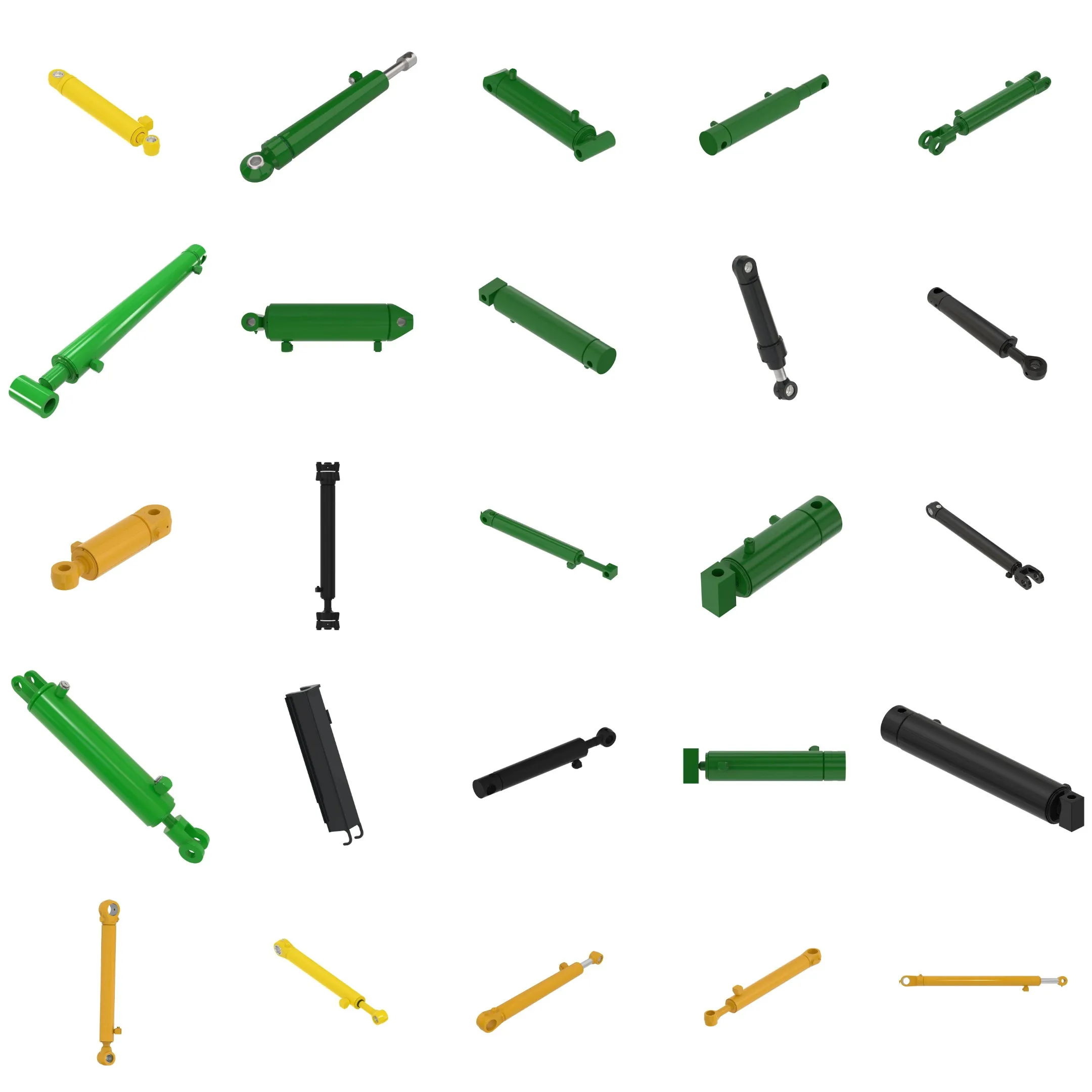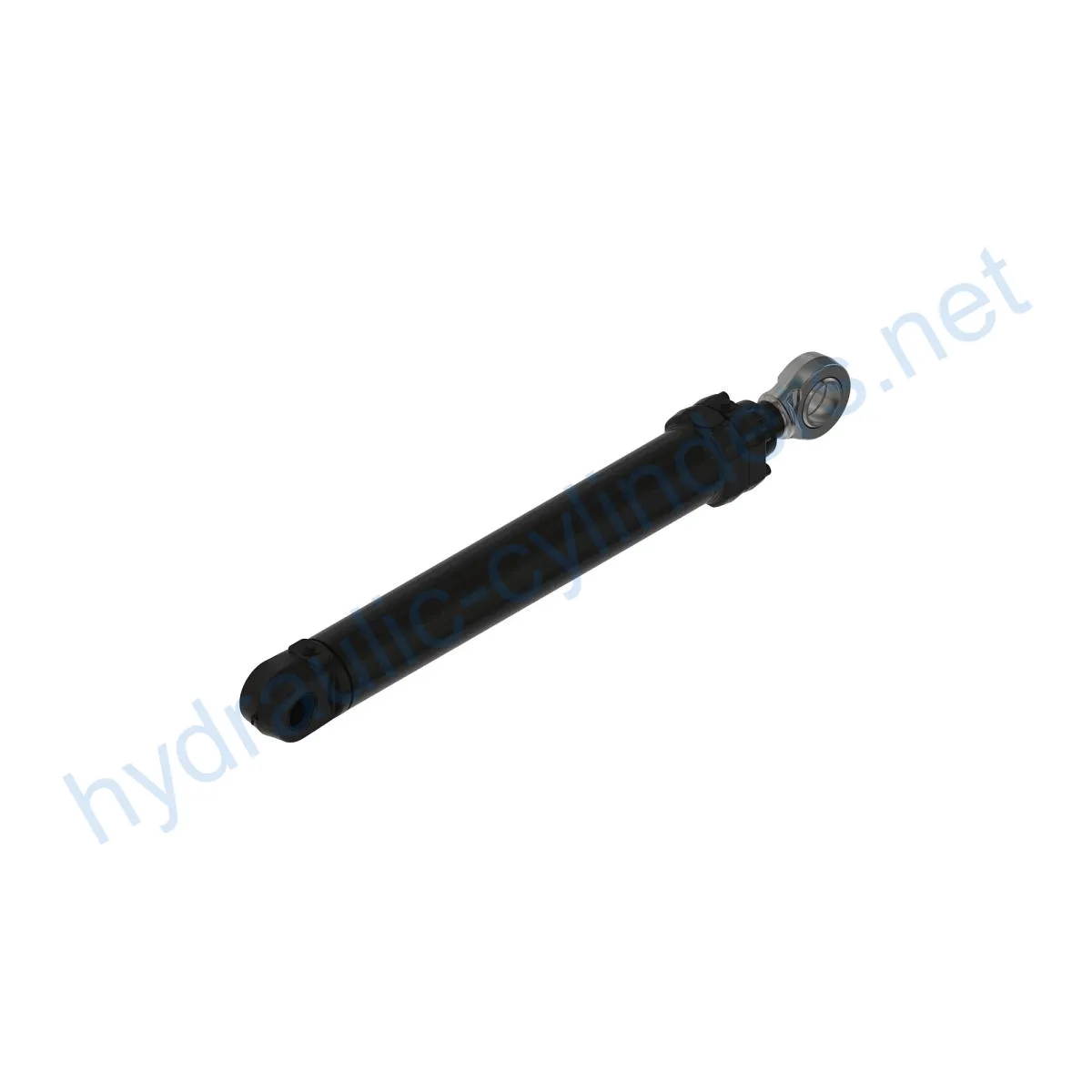Replacement Of AHC16490 Boom Hydraulic Cylinder
Replacement Of AHC16490 Boom Hydraulic Cylinder
Introduction
The Replacement Of AHC16490 Boom Hydraulic Cylinder is a crucial component used in heavy machinery, specifically the 437D and 437E models. This hydraulic cylinder plays a vital role in the smooth operation of these machines, providing the necessary power and control for lifting and moving heavy loads.
Specifications
- Weight: 572.389 lb
- Height: 10 in
- Length: 79.5 in
Features
- Improved Equipment Performance: Replacing damaged or worn hydraulic cylinders restores the equipment’s normal operating capability, ensuring optimum performance in various applications.
- Enhanced Safety: Regular replacement of hydraulic cylinders reduces safety hazards caused by cylinder failures, ensuring the safety of operators and equipment.
- Overload Protection: New cylinder designs often incorporate better overload protection mechanisms, increasing overall safety.
- Quick Installation: Modern hydraulic cylinders are designed for easy installation and replacement, minimizing downtime.
- Standardized Components: Many hydraulic cylinders are standardized, making it easier to obtain replacement parts in the market.
Our company specializes in manufacturing and providing perfect replacements for these hydraulic cylinders. With our expertise and high-quality products, we ensure seamless integration and optimal performance.
Applications
- Excavators: Hydraulic cylinders in excavator arms or buckets may get damaged due to prolonged use or overloading, requiring replacement for normal operation.
- Cranes: Hydraulic boom cylinders in cranes are prone to wear and tear during frequent lifting and lowering, necessitating regular replacement for safety.
- Tractors: Front-end loader hydraulic cylinders in tractors may experience leaks or performance decline during continuous lifting and tilting operations, demanding replacement.
- Harvesters: Hydraulic cylinders endure high pressure during the harvesting process, leading to fatigue damage that needs timely replacement to maintain work efficiency.
- Automated Production Lines: Hydraulic cylinders are used to control robotic arms and other automated equipment. Cylinder failures can significantly impact production efficiency, requiring immediate replacement.
- Die Casting Machines: In high-pressure and high-temperature environments, hydraulic cylinders may experience performance degradation. Regular replacement ensures product quality.
- Mining Equipment: Hydraulic cylinders are used for lifting and moving heavy loads in mining equipment. Due to harsh working conditions, regular inspection and replacement are necessary to avoid equipment failure.
- Bulldozers: Wear on hydraulic cylinders in bulldozer blades can cause a decrease in pushing power, necessitating timely replacement to maintain operational efficiency.
Maintenance and Repair
- Regular Inspection: Routine checks should be performed to identify any signs of wear, leaks, or damage.
- Proper Lubrication: Adequate lubrication is crucial for the smooth operation and longevity of hydraulic cylinders.
- Seal Replacement and Calibration Checks: Seals should be replaced when necessary, and calibration checks should be conducted to ensure optimal performance.
During installation, it is essential to provide proper guidance on aligning the cylinder correctly. The use of appropriate installation brackets to secure the cylinder is recommended. We offer inspection, repair, and replacement services, as well as tips to extend the lifespan of the hydraulic cylinder.
Safety Considerations and Environmental Factors
When using hydraulic cylinders, implementing safety measures is of utmost importance to protect both personnel and equipment. Adhering to safety protocols and using the correct techniques while handling cylinders can prevent accidents and ensure a safe working environment. Additionally, considering environmental factors when choosing hydraulic cylinders helps minimize their impact on the surroundings.
Troubleshooting and Common Issues
1. Cylinder Leakage:
One common issue with hydraulic cylinders is leakage. This can be due to worn seals or damaged components. To address this problem, inspect the seals and replace them if necessary. Properly tighten all connections and ensure the cylinder is properly lubricated.
2. Slow Cylinder Movement:
If the hydraulic cylinder moves slowly, it could be caused by insufficient hydraulic fluid or a clogged filter. Check the fluid levels and replace or clean the filter as needed.
3. Cylinder Drift:
Cylinder drift occurs when the cylinder slowly extends or retracts even when there is no control input. This can be a sign of internal valve wear or contamination. Inspect the valves and clean or replace them if necessary.
By following these troubleshooting tips and addressing common issues promptly, readers can effectively diagnose and resolve problems. Implementing preventive measures will also help minimize potential issues.

Design Considerations and Selection Criteria
When considering the design of hydraulic cylinders, several factors should be taken into account:
- Load-Bearing Capacity: The hydraulic cylinder should be capable of handling the intended load without failure.
- Sealing Capability: High-quality seals, such as piston seals and rod seals made of wear-resistant materials like polyurethane or nitrile rubber, should be utilized to ensure effective sealing.
- Durability: The cylinder body and threaded ends should undergo precise machining to enhance wear resistance and durability.
- Safety: Safety features should be integrated into the cylinder design to prevent accidents, such as overload protection mechanisms and safety valves.
- Maintainability: Easy access to components and the ability to replace or repair parts are crucial for efficient maintenance.
Sealing and Lubrication
Hydraulic cylinders require proper sealing and lubrication to ensure optimal performance:
- Various sealing elements, including piston seals and rod seals, should be carefully selected for their wear-resistant properties.
- The cylinder body and threaded ends should undergo fine surface treatments to improve wear resistance.
- Regular lubrication with the appropriate hydraulic oil is necessary to minimize friction and extend the lifespan of the cylinder.
Regular Inspection and Preventive Maintenance
To ensure the longevity and reliability of the hydraulic cylinder, the following measures should be taken:
- Regular inspections should be conducted to identify potential issues early on.
- Proper installation, lubrication, and adjustment are essential for optimal cylinder performance.
- Providing guidance on aligning the cylinder correctly during installation is crucial.
- Using appropriate installation brackets to secure the cylinder can prevent unnecessary movement and damage.
- Recommended inspection, repair, and replacement procedures should be followed.
- We offer replacement parts and rebuilding services to enhance the lifespan of the hydraulic cylinder.

About Our Company
We are a leading manufacturer and wholesale distributor of replacement hydraulic cylinders,
参观我们的 VR 工厂
通过以下方式参观我们的 VR 工厂
液压缸应用:


